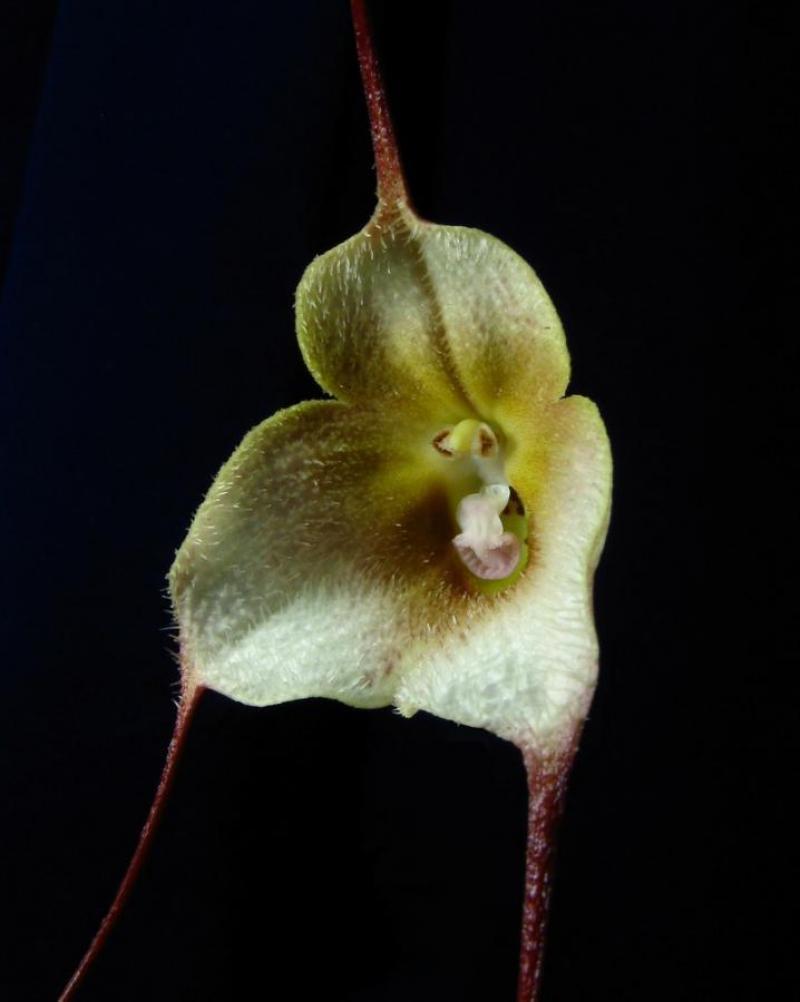Dracula amaliae
Also known as: Amalia's Dracula in the subfamily: Epidendroideae
Native to: Departamento del Huila - Colombia
General Information
Amalia's Dracula is a cool to warm growing epiphytic orchid belonging to the sub family Epidendroideae native to Colombia. It is named after the Sra Lehmann de Sarria Colombian grandaughter of Orchid Collector in the 1900's.
Plant Description
Grows to 28cm. Each new growth has a single leathery erect, elliptic leaf that grows to 1.5-24cm long. Pseudobulbs grow to 3-4.5cm
Flowers
Numerous blossoms appear during Summer and Autumn
Blooming Season
- Autumn
- Summer
Substrate(s)
- Coarse
- Bark
- Charcoal
- Treefern
- Spaghnum Moss
- Perlite
Care Notes
These orchids like to be watered regulary, especially during warm weather, and prefer a well draining mix or also do well mounted, provided they can be watered daily or even many times a day.
These are quite a forgiving orchid, there are no special requirements to get this orchid to flower, just good care and consistent conditions. Larger plants may be more fussy and can react poorly to change; a poorly timed repotting, a pest infection or an unusually hot day can set them back for a couple of years. However, even plants that have been treated poorly can thrive, and if they are set back they often recover much stronger then they would otherwise be.
Climate
Grows at high elevations. Rainfall ranges from 33mm to 277mm per day, heaviest in November and lightest in August. Humidity ranges from 62% to 79%, highest in December and lowest in August. Temperature ranges from 11C to 25C, highest in August (11C to 25C) and lowest in May (11C to 23C).
Watering
These orchids prefer a constant supply of moisture, with a slight drying out between waterings. Saucers can be placed under pots to retain moisture during hot weather, however the saucers should be removed or let to dry every 1-2 weeks to prevent rot. Keep an eye on the plant especially in hot weather and look for cues of under/overwatering and adjust accordingly.
Fertiliser
These orchids do not need to be regularly fertilised and roots may be sensitive to salt build-up, dying back and therefore impairing the plants growth or even killing it.
If fertilising, use half to quarter of the recommended amount of fertiliser. If they receive fertiliser as part of a collection, be sure to flush out the pots regularly with fresh water and monitor the roots by checking how much resistance is given by the plant when nudged in its pot or mount. If the plant becomes wobbly or loose, repot in fresh mix or rinse the media/mount thoroughly and do not fertilise for at least 3 months.
Use balanced fertiliser year round. Apply fertiliser regularly at half strength year round. This plant is sensitive so apply fertiliser sparingly at one quarter recommended strength or less. Use a high Nitrogen fertiliser year round. Use a high Phosphorous fertiliser during Summer.Potting
These plants are quite forgiving and will do well repotted ever 2-3 years. The mix should be coarse, well draining, and allow space for air to move and for roots to grow.
Alternatively, these plants will also do well mounted to tree fern or cork slabs, or mounted to trees.
Best time for repotting or mounting the orchids is the end of winter when new growths start to appear. Avoid repotting during hot weather,
Use water retentive media such as moss to prevent roots from drying out quickly This plant does very well in baskets or suspended pots This plant does well mounted. Repotting is best done annually.



